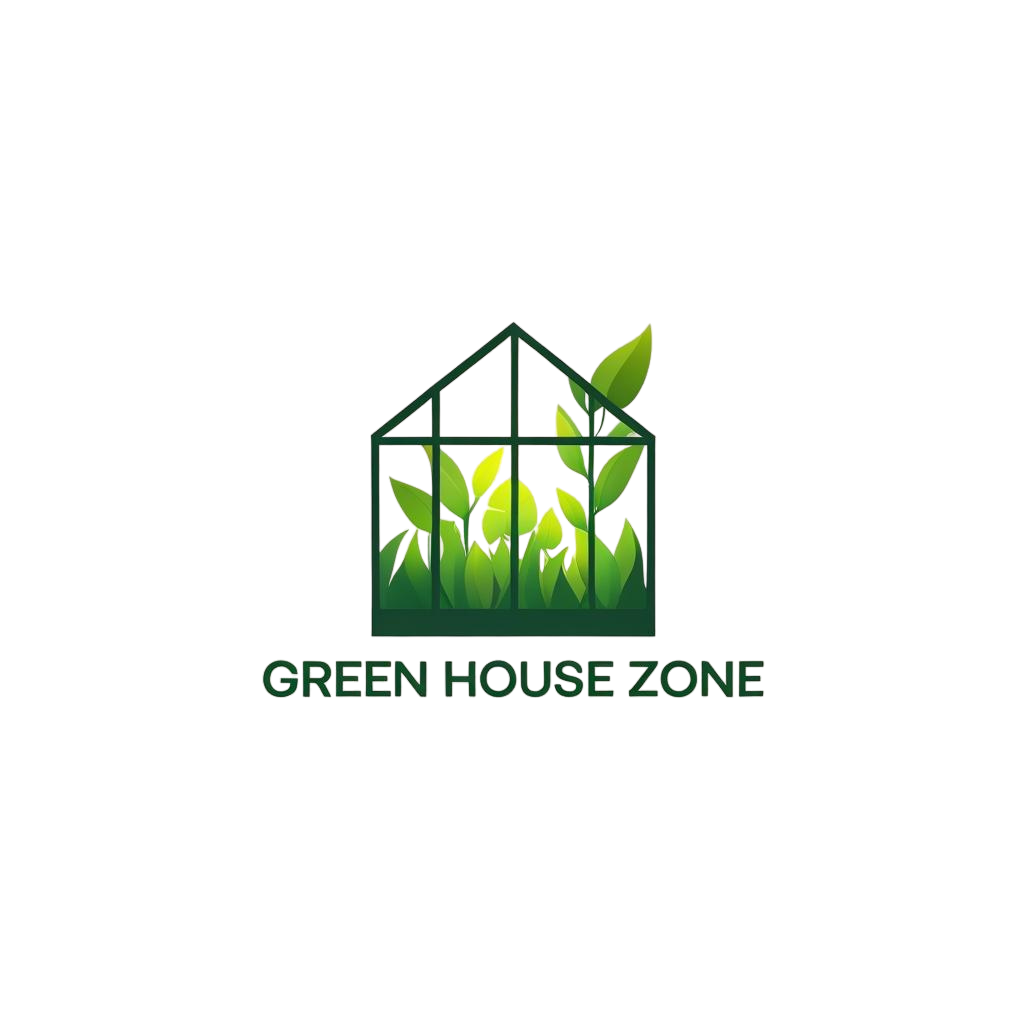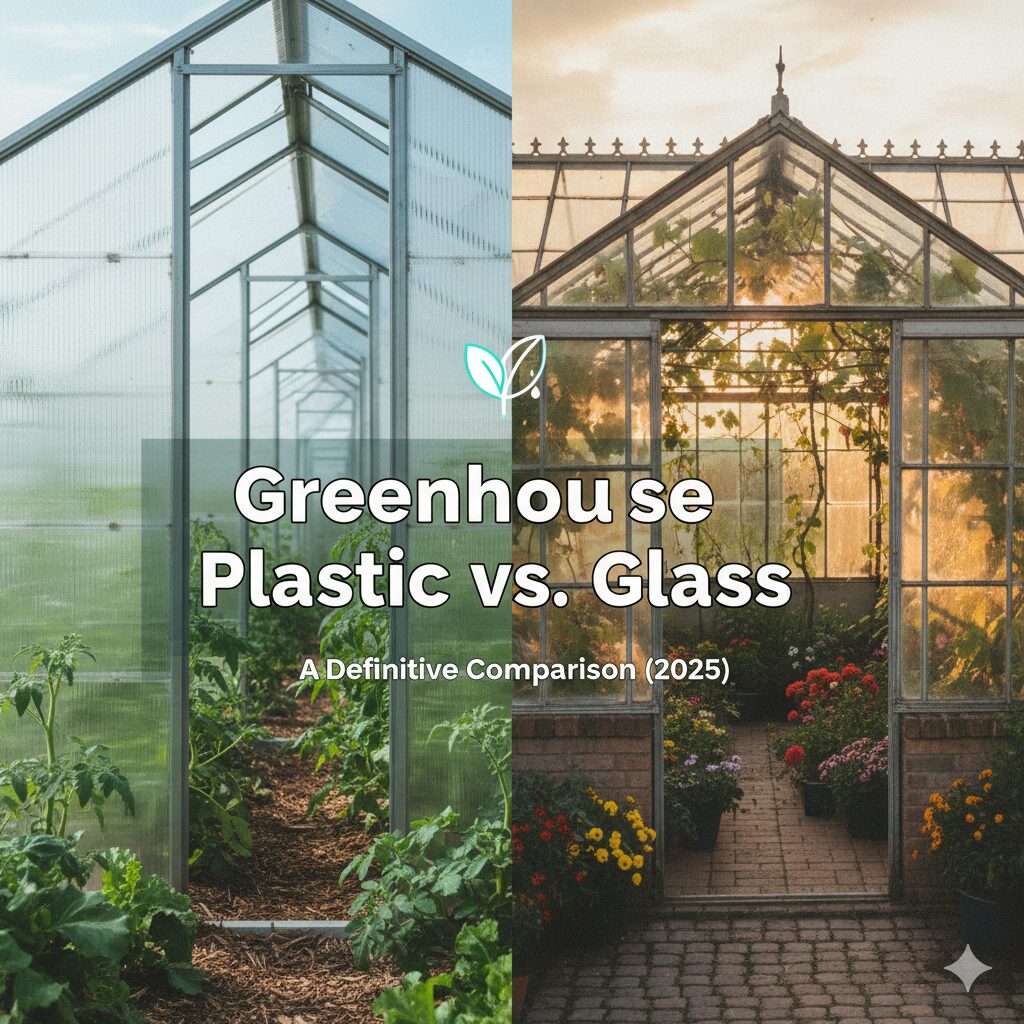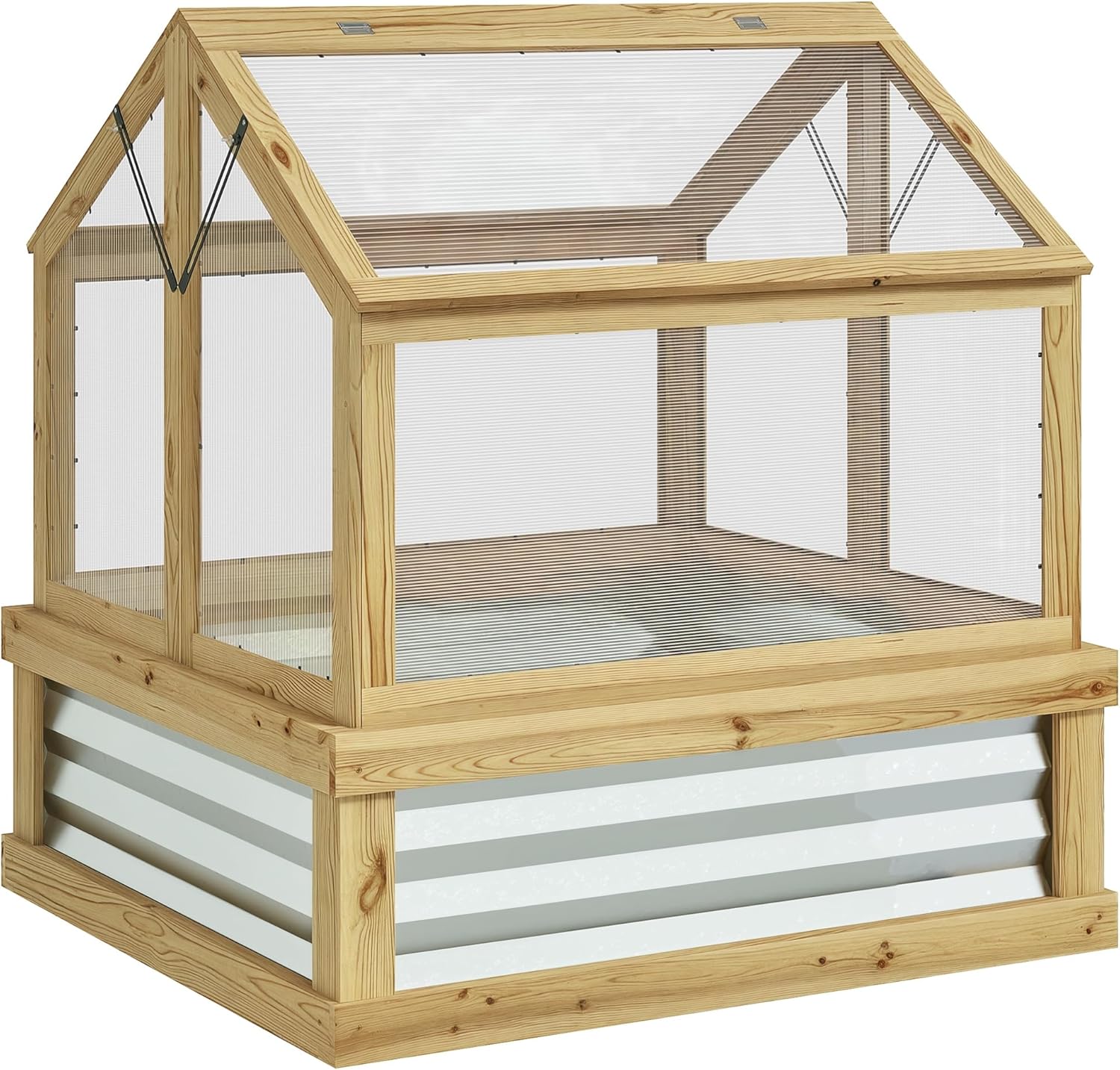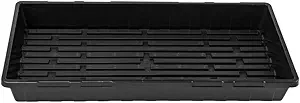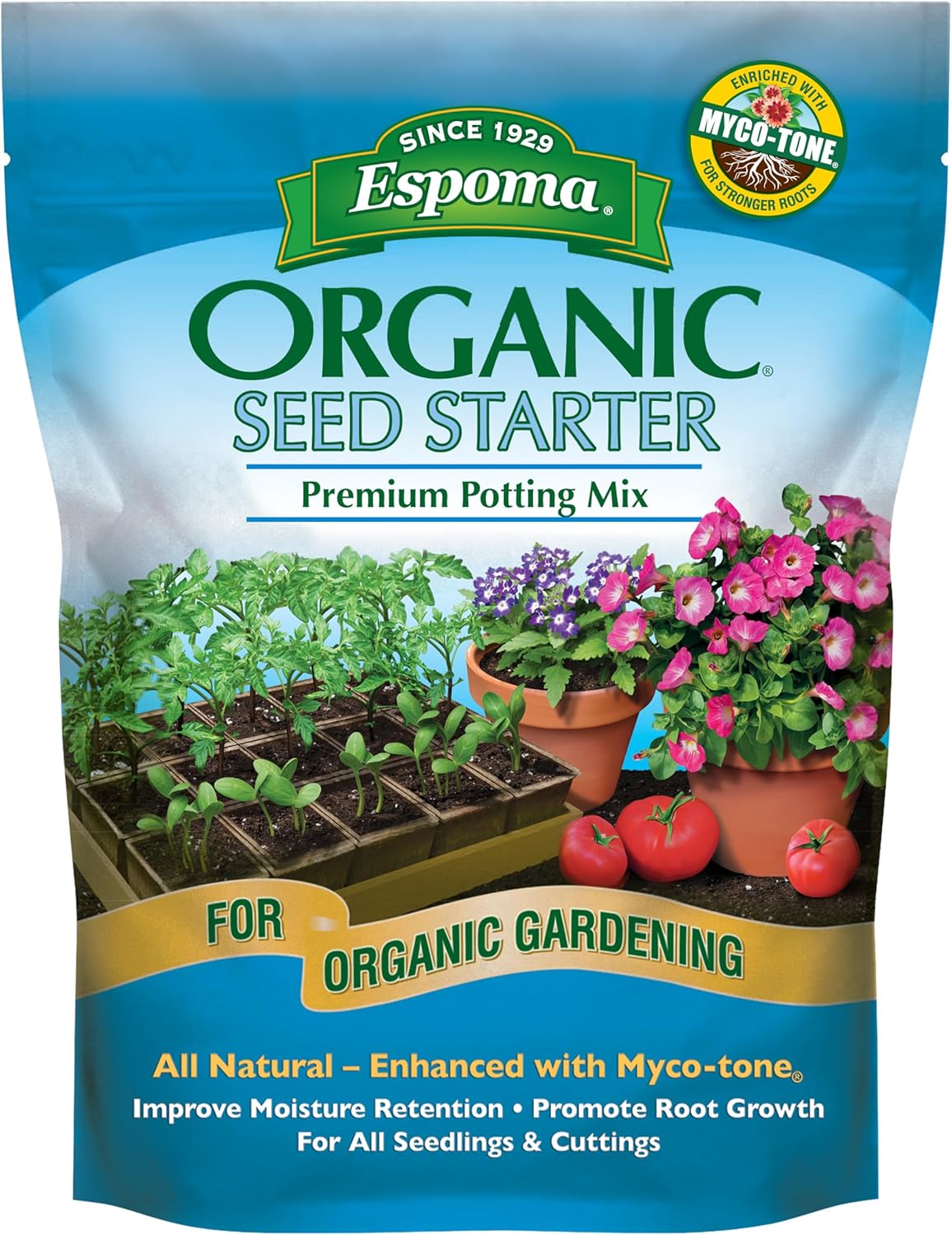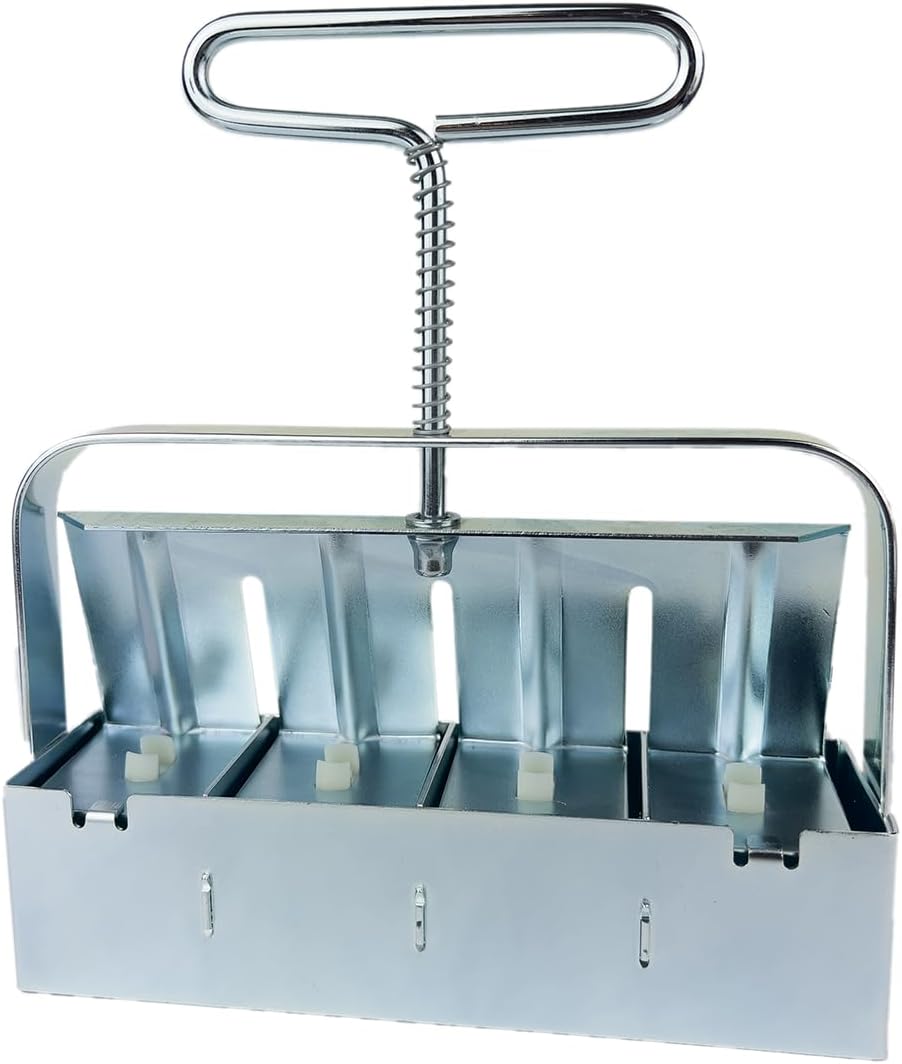Greenhouse Plastic vs. Glass: A Definitive Comparison (2025)
You’ve decided to build your dream greenhouse—a personal Eden for growing fresh vegetables, exotic flowers, or tender seedlings. But before you can hammer a single nail, you face the most fundamental decision of all: what material will you use to cover it? This choice between classic glass and modern plastics is more than just aesthetic; it will define your budget, durability, heating costs, and even the health of your plants for years to come.
At a Glance: Glass vs. Plastic Greenhouse Coverings
For a quick, high-level overview, this table breaks down the key differences between the three most popular greenhouse covering materials in the U.S. market: Glass, Polycarbonate, and Polyethylene Film.
| Feature | Glass | Polycarbonate (Twin-Wall) | Polyethylene Film |
|---|---|---|---|
| Aesthetics | Timeless, crystal clear, premium | Modern, functional, slightly opaque | Utilitarian, temporary appearance |
| Initial Cost | Very High | Moderate to High | Very Low |
| Durability | Fragile; breaks on impact | Virtually unbreakable; impact resistant | Prone to punctures and tears |
| Lifespan | Effectively permanent (if not broken) | 10-20 years (UV-coated) | 3-6 years (greenhouse grade) |
| Insulation (R-Value) | Poor (~0.9 single, ~2.0 double) | Good to Excellent (~1.5 – 2.5) | Poor (single), Good (inflated double) |
| Light Quality | Direct, high transmission (can scorch) | Diffused, even light (healthier for plants) | Diffused, even light |
| Weight | Very Heavy | Lightweight | Extremely Lightweight |
| DIY Friendliness | Low (often needs professional install) | Moderate | High (very DIY-friendly) |
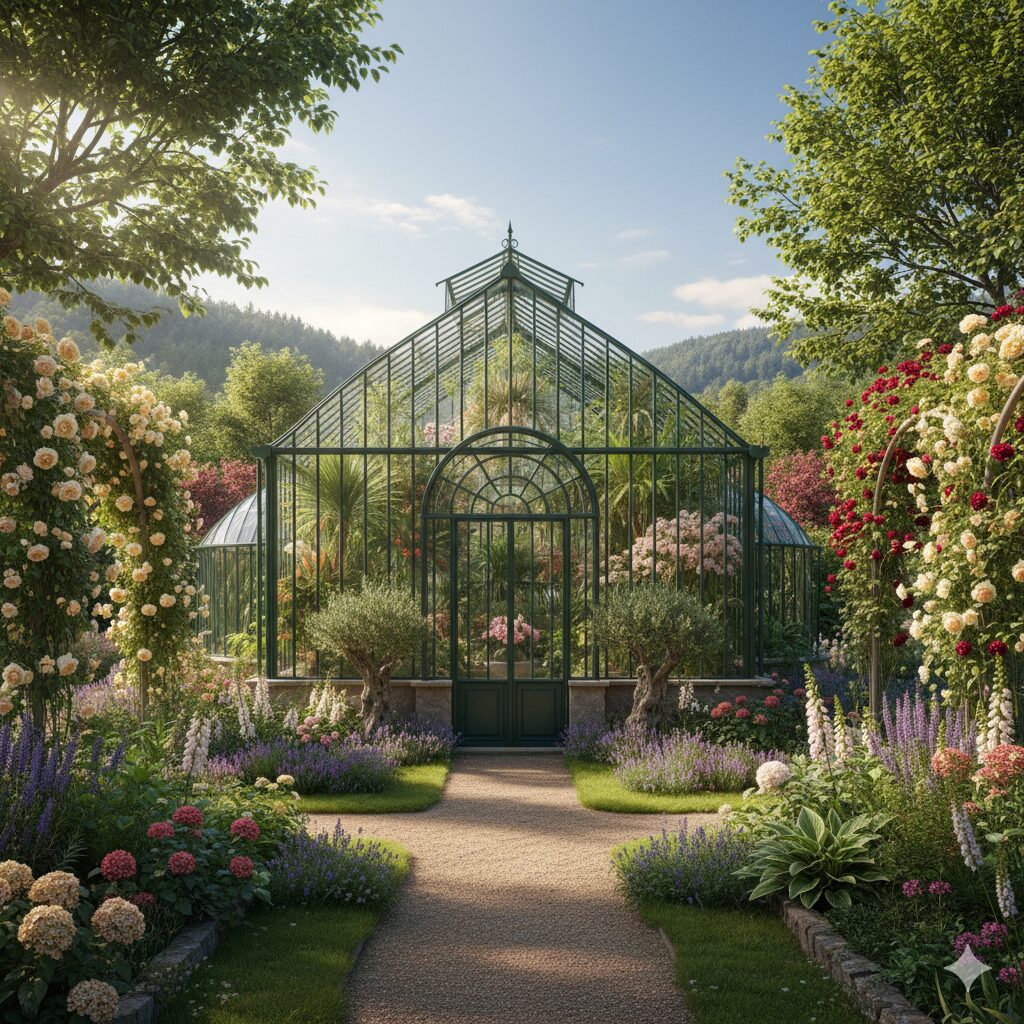
The Enduring Classic: A Deep Dive into Glass Greenhouses
When you picture a greenhouse, you likely imagine a stately glass structure, reminiscent of a Victorian conservatory. Glass has been the traditional choice for centuries, and for good reason. It offers unparalleled beauty and clarity, turning a functional growing space into a stunning architectural feature.
The Science and Types of Greenhouse Glass
Not all glass is created equal. For greenhouse applications, you’ll typically encounter two main types:
- Annealed Glass: This is standard window glass. It’s the most affordable option but breaks into large, dangerous shards. It’s generally not recommended for overhead glazing due to safety concerns.
- Tempered Glass: Also known as “safety glass,” this is annealed glass that has been heat-treated to be four to five times stronger. When it does break, it shatters into small, relatively harmless pebble-like pieces. This is the standard for most quality glass greenhouse kits today.
You may also see options for double-paned or insulated glass units (IGUs), which significantly improve insulation but also dramatically increase the cost and weight.
Pros of Glass
- Unmatched Beauty & Clarity: Glass offers perfect optical clarity, allowing you to enjoy the view of your plants from the outside and the garden from the inside. It adds significant aesthetic and monetary value to your property.
- Maximum Light Transmission: When clean, no other material transmits more Photosynthetically Active Radiation (PAR)—the spectrum of light plants use for growth.
- Exceptional Longevity: Glass is an inert material. It does not degrade from UV exposure, will not yellow, cloud, or become brittle over time. A glass panel will last indefinitely unless it is broken.
- Easy to Clean: The hard, non-porous surface of glass makes it simple to clean with a squeegee and standard glass cleaner, maintaining its high light transmission.
- Fire Resistant: Glass is non-combustible, adding a layer of safety.
Cons of Glass
- High Initial Cost: Glass is the most expensive glazing option, period. The material itself, the heavy-duty frame required to support it, and professional installation costs add up quickly.
- Extreme Fragility: Despite tempering, glass is still vulnerable to impact from hail, falling branches, or a stray baseball. A single broken pane can be costly and difficult to replace.
- Poor Insulation: Single-pane glass has a very low R-value (a measure of thermal resistance) of around 0.9. This means significant heat loss in winter, leading to high heating bills.
- Direct, Harsh Light: The high light transmission can be a double-edged sword. Direct sunlight can create hot spots, burning sensitive plant leaves and overheating the structure quickly, necessitating shade cloths.
- Heavy Weight: Glass is incredibly heavy, requiring a substantial, professionally engineered foundation and frame made of aluminum, steel, or robust wood. This is not a lightweight, DIY-friendly project.
Expert Takeaway on Glass: Glass is for the gardener who views their greenhouse as a permanent, architectural feature of their home and landscape. It’s an investment in beauty and longevity, best suited for those with a significant budget in U.S. climates that don’t experience frequent, severe hail (or for those willing to invest in laminated glass for extra protection).
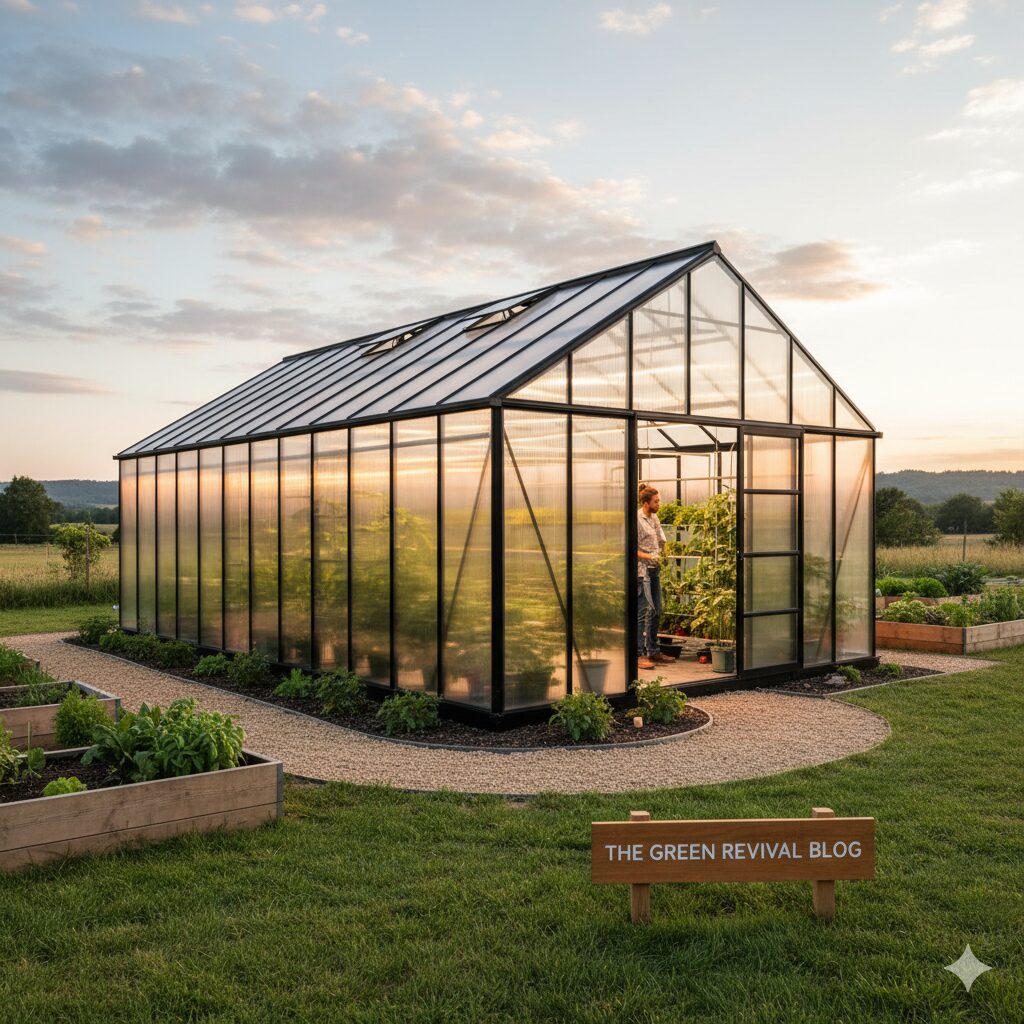
The Modern Workhorse: A Deep Dive into Plastic Greenhouses
The term “plastic greenhouse” is broad and covers two very different, popular materials: rigid polycarbonate panels and flexible polyethylene film. Both offer distinct advantages over glass, primarily in durability, insulation, and cost. They represent the practical, modern approach to greenhouse construction.
Part A: Polycarbonate – The Tough, Insulating Champion
Polycarbonate is a thermoplastic polymer that is incredibly tough and resilient. For greenhouses, it’s most commonly used in its “twin-wall” or “multi-wall” form. These panels look like a plastic sandwich, with two flat outer layers connected by an inner ribbing. This structure traps air, creating a fantastic insulating layer—much like a double-paned window.
Why Polycarbonate Shines for Growers
The primary horticultural advantage of polycarbonate is light diffusion. Instead of a direct beam of light (like from glass), polycarbonate scatters the light as it passes through. This diffused light is gentler on plants, eliminates shadows, prevents scorching, and allows light to penetrate deeper into the plant canopy to reach lower leaves. This benefit alone is why many professional growers prefer it over glass.
Pros of Polycarbonate
- Incredible Durability: This is polycarbonate’s superstar quality. It is 200 times stronger than glass and virtually unbreakable. It easily withstands hail, snow loads, and accidental impacts, making it ideal for harsh U.S. climates.
- Superior Insulation: The air channels in twin-wall panels give it a high R-value (typically 1.5 to 2.5, depending on thickness). This translates directly into lower heating costs in the winter, a critical factor for successful greenhouse gardening year-round.
- Excellent Light Diffusion: As mentioned, the diffused light it provides is arguably better for most plants than the direct light from glass, promoting healthier, more balanced growth.
- Lightweight & DIY-Friendly: Polycarbonate is a fraction of the weight of glass. This makes it easier, safer, and cheaper to ship and install. It also allows for a lighter, less expensive frame, making it a feasible project for a skilled DIYer.
- UV Protection: Most greenhouse-grade panels have a UV-resistant coating on the exterior-facing side. This protects plants from harmful rays and, more importantly, protects the panel itself from degrading and yellowing prematurely.
Cons of Polycarbonate
- Shorter Lifespan than Glass: While durable, polycarbonate is not permanent. The UV coating will eventually break down, and the panel may yellow or become brittle after 10-20 years.
- Susceptible to Scratching: The surface is softer than glass and can be scratched by abrasive cleaners or branches. Scratches can reduce light transmission over time.
- Lower Aesthetic Appeal: It lacks the crystal clarity of glass. While functional, its semi-opaque appearance might not appeal to those seeking a classic conservatory look.
- Internal Condensation/Algae: If the panel ends are not properly sealed with special tape, condensation and algae can form inside the flutes, which is unsightly and difficult to clean. This is a critical step often missed in a standard greenhouse maintenance checklist.
- Expansion and Contraction: As a plastic, it expands and contracts with temperature changes. This must be accounted for during installation with appropriate fasteners and spacing.
Part B: Polyethylene Film – The Budget-Friendly Solution
Polyethylene (PE) film is the go-to choice for commercial growers and hobbyists on a budget, especially for hoop houses and high tunnels. We are not talking about simple hardware store plastic wrap. Greenhouse-grade PE film is a highly engineered product, measured in mil thickness (6 mil is the standard) and imbued with special properties.
The Technology Behind Simple Plastic
Quality greenhouse film contains additives that make it suitable for growing:
- UV Stabilizers: To prevent the film from breaking down quickly in the sun. A good film is rated for at least 4 years of life.
- Anti-Condensate (or Anti-Drip): An inner layer that encourages condensation to form as a sheet rather than as droplets that can drip on plants and spread disease.
- Infrared (IR) Additives: A special additive that helps trap radiant heat inside the greenhouse at night, keeping it warmer and reducing heating costs.
For superior insulation, growers install two layers of film over the structure and use a small inflation blower fan to maintain a cushion of air between them. This simple technique can nearly double the R-value of the covering.
Pros of Polyethylene Film
- Extremely Low Initial Cost: This is the single cheapest way to cover a greenhouse frame. It makes large-scale or starter greenhouses financially accessible.
- Highly DIY-Friendly: The film is lightweight and easy for one or two people to pull over a frame and secure using techniques like wiggle wire channels.
- Excellent Light Diffusion: Like polycarbonate, PE film provides the soft, scattered light that most plants love.
- Good Insulation (Double Layer): An inflated double-layer system provides excellent insulation, often rivaling or exceeding that of twin-wall polycarbonate.
- Flexibility: Can easily cover curved surfaces like hoop houses, where rigid panels would be impractical.
Cons of Polyethylene Film
- Shortest Lifespan: Even high-quality, 4-year film needs to be replaced every 4-6 years (sometimes sooner in high-UV states like Arizona or Florida). This is a recurring labor and material cost.
- Vulnerable to Damage: The film can be punctured by sharp objects and can tear in extremely high winds if not properly tensioned and secured. Avoiding this is one of the key common greenhouse mistakes to avoid during construction.
- Lower Aesthetics: It has a purely functional look and can appear less tidy than a rigid panel structure.
- Constant Maintenance: Requires periodic checks to ensure it remains taut and to patch any small holes that may appear.
Head-to-Head: Making the Right Choice for Your U.S. Garden
Choosing your covering is a balancing act. Let’s break down the final decision by the factors that matter most.
- If Budget is Your #1 Priority: Polyethylene film is the undisputed winner for initial cost. However, remember to factor in the cost of replacement every 4 years. Over a 20-year period, a high-quality polycarbonate greenhouse might be cheaper.
- If You Live in a Storm-Prone Area (Hail/High Winds): Polycarbonate is your best and safest choice. Its impact resistance provides peace of mind that glass and poly film cannot.
- If Aesthetics and Home Value Are Paramount: Glass is the clear winner. Nothing matches its beauty and permanence as a home addition.
- If You Want the Best Insulation for Winter Growing: It’s a tie between multi-wall polycarbonate and a double-inflated layer of PE film. Both significantly outperform glass and will save you a fortune on heating.
- If You’re a DIY Builder: Polyethylene film is the easiest to work with, followed by polycarbonate. Glass is the most difficult and generally requires professional help.
Expert Product Picks for Greenhouse Builders
Navigating the options can be tough. Here are some highly-rated products on Amazon to get you started on your build. This is truly the best greenhouse covering selection for various needs.
Top Pick: Polycarbonate Panels
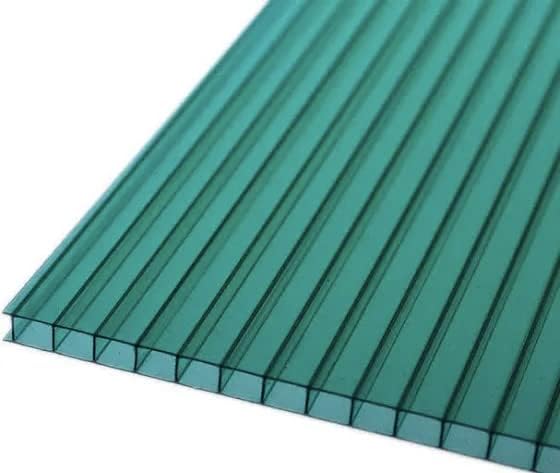
8mm Twin-Wall Polycarbonate Greenhouse Panels
This is the workhorse standard for serious hobby greenhouses. The 8mm thickness provides a great balance of insulation (R-value ~1.7), light transmission, and rigidity. Look for brands that explicitly state they have a 10-year UV coating.
Why We Recommend It:- Excellent durability and impact resistance.
- Provides great insulation for year-round growing.
- Lightweight and can be cut to size with a fine-toothed saw.
Top Pick: Polyethylene Film

Sun Tex 6-Mil, 4-Year Greenhouse Film with IR & Anti-Condensate
When buying film, don’t cheap out. A high-quality, 4-year rated film with IR and Anti-Condensate properties like those from Sun Tex will perform significantly better and last longer, saving you headaches down the road.
Why We Recommend It:- Engineered specifically for greenhouse use.
- IR additive helps retain heat overnight.
- Anti-condensate layer promotes healthier plants.
Beyond the Covering: Creating a Complete System
Your choice of covering is just the first step. It directly influences the other systems you’ll need. A poorly insulated glass greenhouse will demand a more powerful heating and ventilation system than a polycarbonate one. When planning your ventilation, it’s critical to understand the greenhouse fan vs vent debate to make the right choice for your specific structure. Similarly, the diffused light in a plastic greenhouse can reduce evaporation, which might affect your choice from the best drip irrigation kits. And no matter how well-sealed your structure is, pests can always find a way in, so having a plan for how to stop whiteflies in greenhouses is essential. A holistic approach is key to success.
Frequently Asked Questions (FAQ)
Is polycarbonate better than glass for a greenhouse?
For most U.S. growers, yes. Polycarbonate offers superior durability against weather, better insulation for energy savings, and healthier diffused light for plants. Glass wins on pure aesthetics and longevity if it is never broken, but polycarbonate is often the more practical, resilient choice.
Does polycarbonate turn yellow?
Eventually, yes. However, high-quality polycarbonate panels come with a UV-protective layer on one side. When installed correctly (UV side out), this layer drastically slows the yellowing process. You can expect 10-15 years of good clarity before significant yellowing begins.
Is it cheaper to build a greenhouse with plastic?
Yes, significantly. A greenhouse built with a polyethylene film-covered hoop house frame is the cheapest method possible. A polycarbonate greenhouse is also considerably cheaper than a glass one because both the covering material and the required frame are less expensive.
What’s the best thickness for polycarbonate panels?
For most of the U.S., 8mm twin-wall is the sweet spot, offering a great balance of insulation, durability, and cost. If you live in a very cold northern state, upgrading to 10mm or even 16mm can provide extra insulation and reduce heating costs further. For small cold frames or structures in mild climates, 4mm or 6mm can be sufficient.
Conclusion: The Best Greenhouse Covering is the One That’s Right for You
There is no single “winner” in the greenhouse plastic vs. glass debate. The perfect choice is deeply personal and depends entirely on your priorities. Let’s recap the identities of our three contenders:
- Glass: The Legacy Choice. Choose glass if your greenhouse is a permanent landscape feature, aesthetics are your top priority, and your budget is substantial.
- Polycarbonate: The Practical All-Rounder. Choose polycarbonate for the best combination of durability, insulation, and excellent growing conditions. It’s the resilient workhorse for the serious year-round gardener.
- Polyethylene Film: The Accessible Starter. Choose poly film if you are on a tight budget, building a large-scale hoop house, or value the flexibility to easily replace your covering.
By weighing the trade-offs of cost, durability, insulation, and aesthetics against your specific climate and gardening ambitions, you can confidently select the perfect skin for your greenhouse and begin your journey to creating a thriving, productive, and beautiful growing space.
